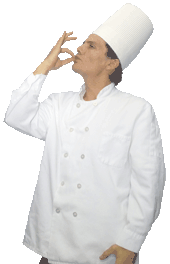At DelightedCooking, we're committed to delivering accurate, trustworthy information. Our expert-authored content is rigorously fact-checked and sourced from credible authorities. Discover how we uphold the highest standards in providing you with reliable knowledge.
What is the Quick-Chill Process?
The quick-chill process is a food preparation technique designed to help limit the growth of bacteria. In actuality, the quick-chill process begins with cooking the food for a short period of time and then initiating lowering the temperature at a rapid pace. The process has the effect of preserving the food for later preparation in meals and helps to prevent foodborne illness from occurring when the food is actually consumed.
To begin a quick-chill process, the food is first cooked to a temperature that is no more than 40 degrees Fahrenheit (or 4.4 degrees Celsius). Because the potential for the development of bacteria increases at temperatures above this amount, maintaining strict control of the maximum temperature is essential to the success of the quick chill process. The cooking time may vary slightly from one food to another, but is usually of a short duration.

Next, the actual cooling down of the cooked food takes place. This step in the quick-chill process can be conducted in several different ways. One common approach is to chop or slice the food into smaller pieces and spread them evenly in a shallow pan. Going with a single layer will allow the food to cool more quickly, even at room temperature.
The use of ice and cold water is another option with a quick-chill process. After placing the sliced or chopped food into a shallow pan, place the pan on a bed of ice. The ice can be housed in a larger bowl or even in the kitchen sink. If desired, cold water can be used instead of ice. Care should be taken to ensure that the pan will float and that water does not actually touch the food.
One common quick-chill process used with the preparation of soups and gelatins involves altering the recipe slightly. By cutting back on the amount of water used during the cooking process, it is possible to add ice to the prepared food after the cooking step is complete. The ice will quickly dissolve into the soup or gelatin and begin to cool the food in very little time. This particular application of the quick chill process is commonly used with the preparation of flavored gelatin dishes, as it allows the gelatin to begin setting more quickly.
AS FEATURED ON:
AS FEATURED ON:










Discussion Comments
what is the different between quick chill and frozen dinner?
Post your comments